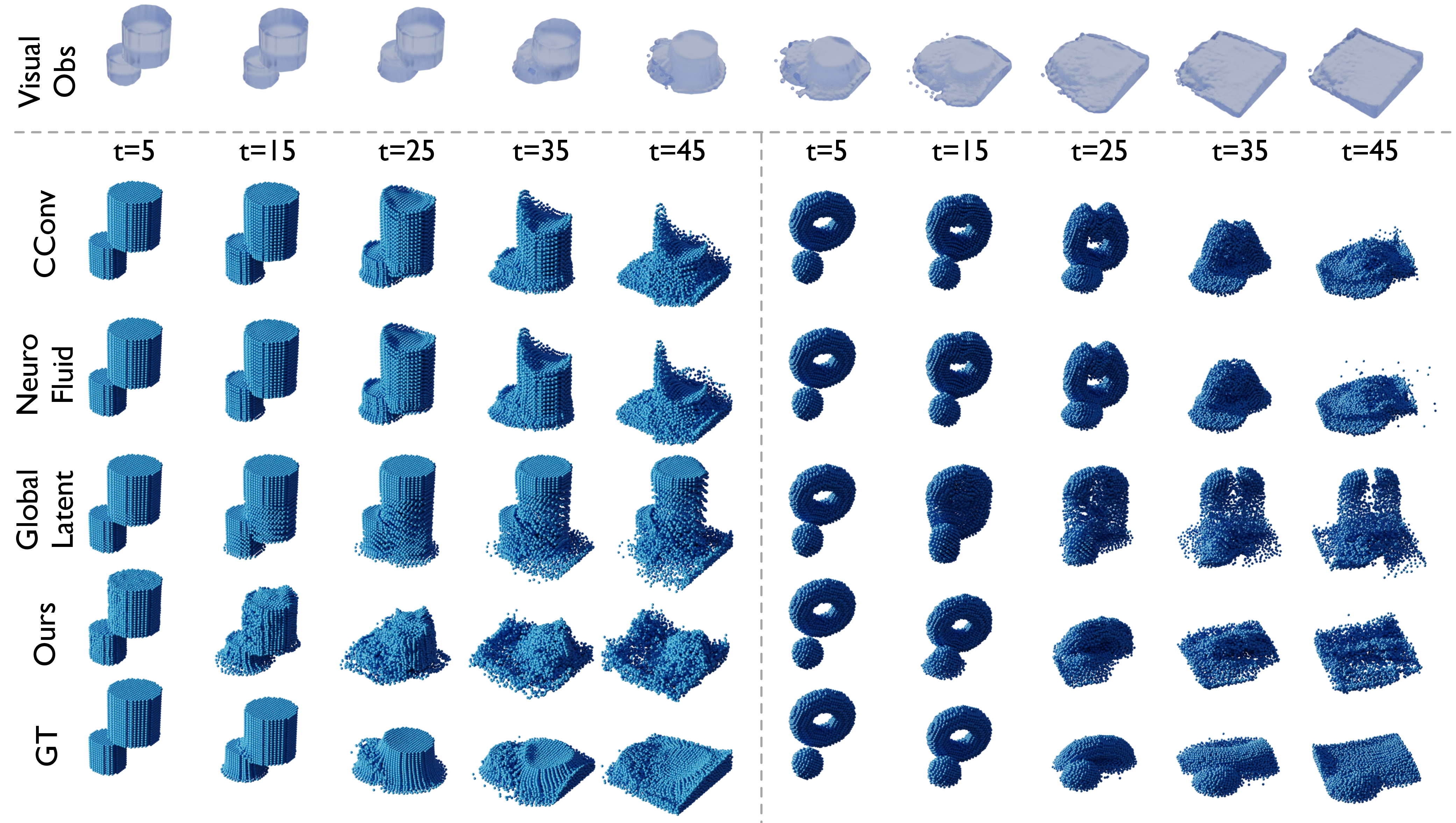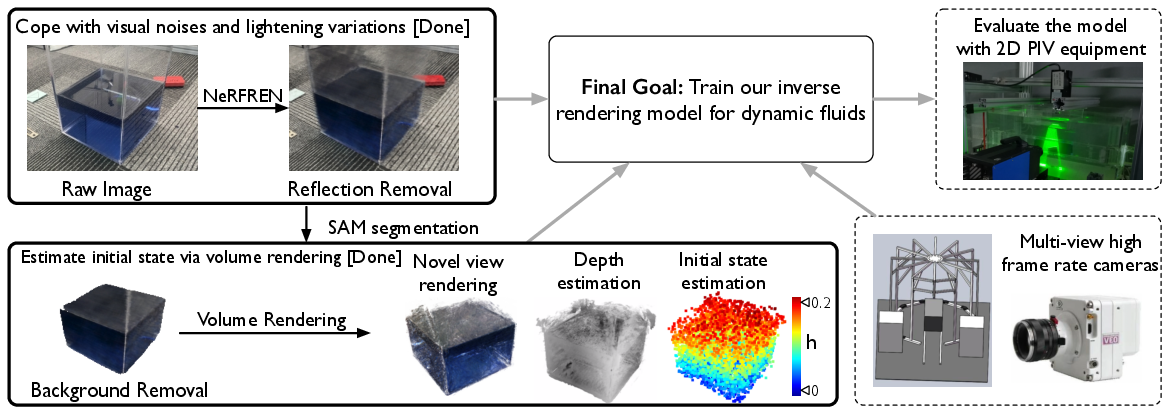- The paper presents a novel transfer learning framework that infers hidden fluid properties from visual data using a latent space.
- It employs a multi-stage architecture combining continuous convolution, NeRF-like methods, and probabilistic modeling to bridge simulation and observation.
- Quantitative results reveal reduced Euclidean prediction errors and robust generalization on unseen fluid dynamics.
Latent Intuitive Physics: Learning to Transfer Hidden Physics from A 3D Video
This essay explores the technical contributions and practical implications of "Latent Intuitive Physics: Learning to Transfer Hidden Physics from A 3D Video" (2406.12769). The paper introduces a novel transfer learning framework designed to infer intangible fluid properties from visual observations and apply them to new simulation contexts. This approach holds potential for advancing fluid dynamics simulations in numerous real-world applications, by bridging the gap between observation-based inference and predictive simulation.
Framework Overview
The introduced framework is predicated on the idea that latent features, conditioned on underlying particle states, can encapsulate hidden physical properties absent from training data. The core of this methodology is a latent space parametrized to connect particle dynamics with visual observations. This framework comprises multiple integrated components including a probabilistic particle transition module, a physical prior learner, a particle-based posterior estimator, and a neural renderer.
These components collectively enable the capture of complex fluid behaviors without explicit knowledge of physical parameters. The framework's probabilistic nature allows it to handle uncertainties intrinsic to physical systems, a stark contrast to traditional deterministic models that fail to capture this level of complexity.

Figure 1: Our approach captures unobservable physical properties from image observations using a parametrized latent space and adapts them for simulation.
Architecture and Methodology
The architecture is systematically divided into pretraining, visual posterior inference, and physical prior adaptation stages. During pretraining, the model leverages continuous convolutional neural networks, akin to SPH frameworks, to develop fluid representations. Training ensures that latent variables are optimized to reflect diverse physical scenarios through KL divergence, and the continuous convolutional processing accommodates the dynamic nature of fluid particles.
Visual posterior inference uses NeRF-like techniques to reconcile visual observations with internal particle states. This involves direct optimization of visual posteriors, enabling the system to adaptively approximate behaviors observed in new scenes. This stage incorporates advanced rendering techniques to adjust for observed fluid states, utilizing photometric loss as a training signal.

Figure 2: Graphical model of the pretraining--inference--transfer pipeline of latent intuitive physics.
Simulation and Generalization
The framework's strength in generalization is demonstrated through simulation tasks on unseen geometrical and boundary conditions. Quantitative assessments, such as average Euclidean distance errors between predicted and actual particle states, highlight the model's superior performance over several established baselines including CConv and PAC-NeRF. The model showcases robust extrapolation capabilities, even when applied to non-pretrained environments.

Figure 3: Qualitative results on generalization to unseen dynamics of heterogeneous fluids.
Moreover, the statistical analysis paints a compelling picture: the model consistently manages to minimize prediction errors, thus validating the theoretical underpinnings with empirical success. The probabilistic approach yields efficient long-term predictions and handles diverse dynamic fluid interactions across different simulated and real-world scenarios.
Challenges and Real-World Potential
While the potential for real-world application is articulated, challenges remain. Specifically, real-world validation requires advanced fluid flow measurement techniques beyond synthetic data verification. The paper explores possibilities in a semi-real experimental setup, focusing on dyed water dynamics to simulate fluid behavior validation protocols.

Figure 4: Our pipeline and intermediate results for real-world experiments.
Conclusion
This exposition of latent intuitive physics opens new possibilities for fluid dynamics simulation through innovative use of latent space inference and probabilistic modeling. The research successfully navigates the complexities of transferring abstract physical principles from visual data to practical simulation environments. Future work could focus on integrating high-fidelity data capture methods and extending the framework's real-world applicability, consistently moving towards more robust, application-ready AI systems.





